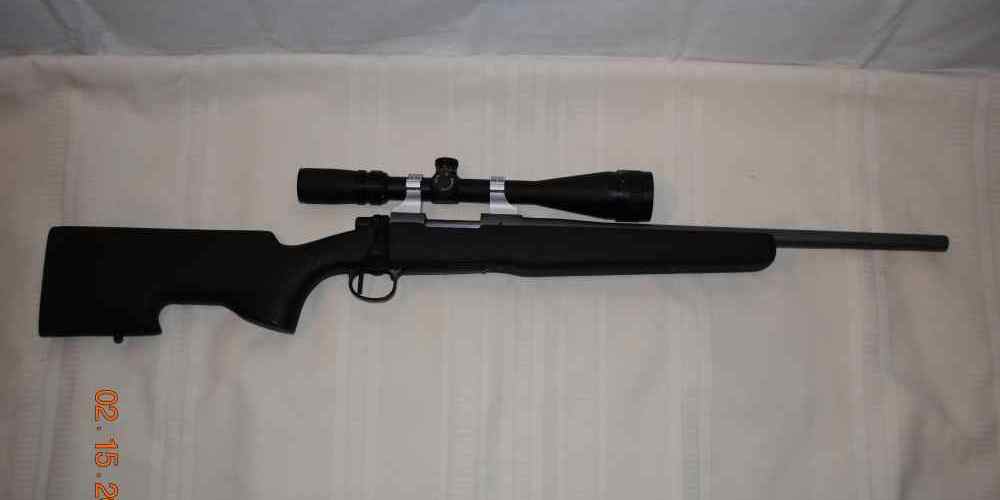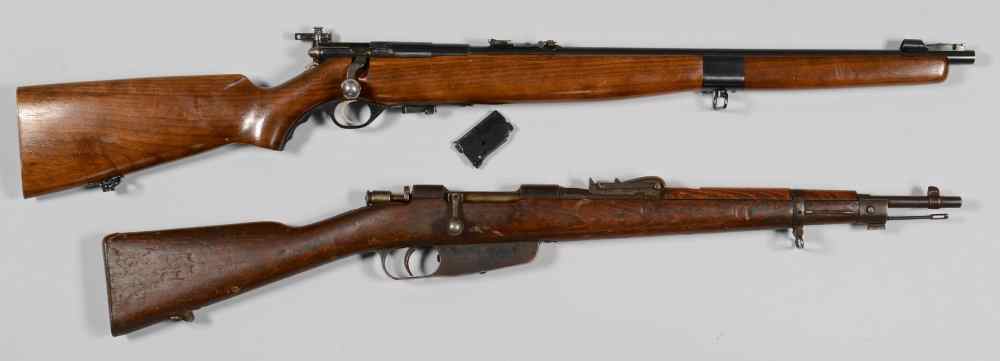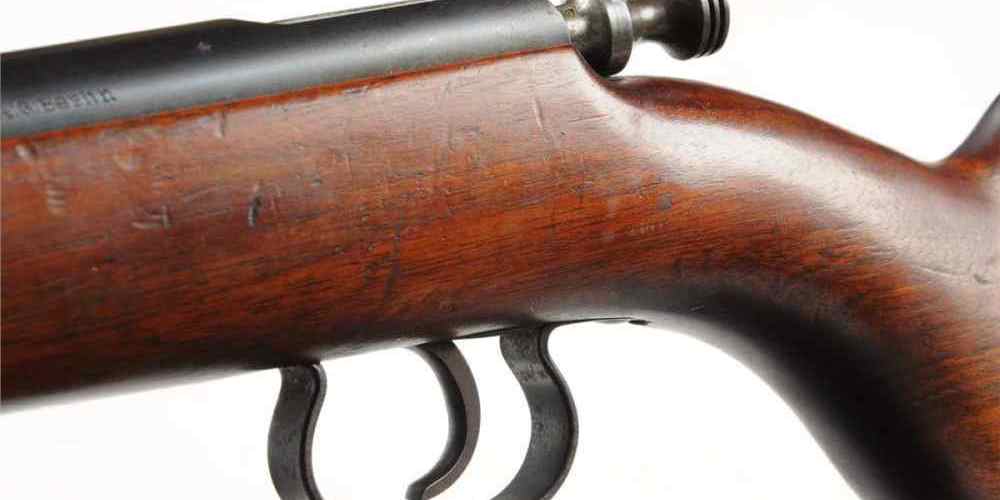“Rifle Bolts and Safety: Preventing Misfires, Ensuring Precision.”
Importance of Properly Maintained Firing Pins
When it comes to firearms, safety is paramount. One crucial component that plays a significant role in preventing misfires is the firing pin. The firing pin is a small, but essential part of a rifle bolt that strikes the primer of a cartridge, igniting the gunpowder and firing the bullet. Proper maintenance and care of the firing pin are essential to ensure that it functions correctly and reliably.
One of the most important aspects of maintaining a firing pin is keeping it clean and free of debris. Over time, dirt, grime, and residue can build up on the firing pin, causing it to become stuck or misfire. Regular cleaning with a solvent and a brush can help prevent this buildup and ensure that the firing pin moves freely and strikes the primer with enough force to ignite the cartridge.
In addition to keeping the firing pin clean, it is also important to inspect it regularly for signs of wear or damage. A worn or damaged firing pin can cause misfires or even fail to strike the primer at all. If you notice any signs of wear or damage, it is essential to replace the firing pin immediately to prevent any potential safety hazards.
Another crucial aspect of maintaining a firing pin is ensuring that it is properly lubricated. A well-lubricated firing pin will move smoothly and strike the primer with the necessary force. However, it is essential to use the correct type of lubricant, as using the wrong type can cause buildup and attract dirt and debris, leading to potential malfunctions.
Properly maintaining a firing pin is not only essential for safety but also for the overall performance and longevity of the firearm. A well-maintained firing pin will ensure that the rifle functions reliably and consistently, preventing misfires and other potential issues that can arise from a poorly maintained firing pin.
In addition to proper maintenance, it is also important to understand how the firing pin works and how to use it safely. When loading and unloading a firearm, always keep the muzzle pointed in a safe direction and keep your finger off the trigger until you are ready to fire. This will help prevent accidental discharges and ensure that the firing pin is only struck when intended.
Overall, the firing pin is a critical component of a rifle bolt that plays a significant role in preventing misfires and ensuring the safety and reliability of the firearm. By properly maintaining and caring for the firing pin, you can help prevent potential safety hazards and ensure that your rifle functions correctly every time you pull the trigger. Remember to regularly clean, inspect, and lubricate the firing pin to keep it in optimal condition and enjoy safe and reliable shooting experiences.
Understanding the Role of Extractors and Ejectors
When it comes to firearms, safety is paramount. One crucial aspect of firearm safety is understanding the role of rifle bolts, extractors, and ejectors. These components work together to ensure that a rifle functions properly and safely. In this article, we will delve into the importance of extractors and ejectors in preventing misfires and malfunctions.

First, let’s discuss the rifle bolt. The bolt is a critical component of a rifle that houses the firing pin and extractor. It is responsible for loading and ejecting cartridges from the chamber. The bolt must be properly engaged and locked in place to prevent misfires and ensure the rifle functions correctly.
The extractor is a small but essential part of the rifle bolt. It is responsible for gripping the rim of the cartridge case and pulling it out of the chamber during the ejection process. Without a functioning extractor, the rifle would not be able to properly eject spent casings, leading to potential malfunctions and misfires.
Similarly, the ejector plays a crucial role in ensuring the safe and efficient ejection of spent casings. The ejector is a spring-loaded mechanism that pushes the spent casing out of the rifle once it has been extracted by the extractor. Without a properly functioning ejector, spent casings could become stuck in the chamber, causing potential safety hazards and malfunctions.
Together, the extractor and ejector work in tandem to ensure that spent casings are safely and efficiently ejected from the rifle. This process is crucial for maintaining the proper functioning of the rifle and preventing misfires.
It is important for firearm owners to regularly inspect and maintain their rifle bolts, extractors, and ejectors to ensure they are functioning correctly. Regular cleaning and lubrication of these components can help prevent malfunctions and ensure the safe operation of the rifle.
In addition to regular maintenance, it is also essential for firearm owners to understand how to properly operate their rifles to prevent misfires. This includes ensuring that the bolt is fully engaged and locked in place before firing, as well as properly loading and ejecting cartridges from the chamber.
Proper training and education on firearm safety and operation are crucial for preventing accidents and misfires. It is important for firearm owners to familiarize themselves with the specific features and functions of their rifles to ensure safe and proper operation.
In conclusion, rifle bolts, extractors, and ejectors play a critical role in preventing misfires and malfunctions. These components work together to ensure that spent casings are safely and efficiently ejected from the rifle, preventing potential safety hazards. By understanding the role of extractors and ejectors in rifle safety, firearm owners can take the necessary steps to maintain their rifles properly and prevent accidents.
Examining the Functionality of Safety Mechanisms
When it comes to firearms, safety is paramount. One of the key components of a rifle that ensures safety is the bolt. The bolt is the mechanism that loads and fires the ammunition in a rifle. It is crucial that the bolt functions properly to prevent misfires and accidents. In this article, we will examine the functionality of rifle bolts and safety features that prevent misfires.
Rifle bolts come in various designs, but they all serve the same purpose – to chamber a round, lock it in place, fire it, and extract the spent casing. The bolt is typically operated by a handle that the shooter manipulates to cycle the action. The bolt face is where the firing pin strikes the primer of the cartridge to ignite the powder and fire the round.
One of the most important safety features of a rifle bolt is the firing pin block. This is a mechanism that prevents the firing pin from striking the primer unless the trigger is pulled. The firing pin block is typically engaged when the bolt is not fully closed or when the safety is engaged. This prevents accidental discharges if the rifle is dropped or mishandled.
Another safety feature of rifle bolts is the bolt handle. The bolt handle is used to manipulate the bolt and chamber a round. Some bolt handles are designed to be easily manipulated, while others require more force to operate. A smooth-operating bolt handle is essential for quick and efficient cycling of the action.
The bolt body is another important component of a rifle bolt. The bolt body houses the firing pin, extractor, and ejector. The extractor is a mechanism that grips the rim of the cartridge and pulls it out of the chamber when the bolt is cycled. The ejector is a mechanism that kicks the spent casing out of the rifle after firing. These components work together to ensure smooth and reliable operation of the rifle.
In addition to safety features, rifle bolts also have performance-enhancing features. One such feature is the cocking piece. The cocking piece is a mechanism that cocks the firing pin when the bolt is cycled. This ensures that the firing pin is in the proper position to strike the primer when the trigger is pulled. A properly functioning cocking piece is essential for reliable ignition of the cartridge.
The bolt lug is another performance-enhancing feature of a rifle bolt. The bolt lug is a locking mechanism that locks the bolt in place when the rifle is fired. This prevents the bolt from opening prematurely and causing a misfire. A strong and durable bolt lug is essential for safe and reliable operation of the rifle.
In conclusion, rifle bolts are a critical component of a firearm that ensures safety and reliability. Safety features such as firing pin blocks and bolt handles prevent misfires and accidents. Performance-enhancing features such as cocking pieces and bolt lugs ensure smooth and reliable operation of the rifle. It is important to properly maintain and inspect your rifle bolt to ensure that it functions properly and safely. By understanding the functionality of rifle bolts and safety features, you can enjoy shooting sports with confidence and peace of mind.
Exploring Different Types of Bolt Actions
When it comes to rifles, one of the most important components to consider is the bolt action. The bolt action is responsible for loading and ejecting cartridges, as well as locking the breech to ensure safe firing. In this article, we will explore the different types of bolt actions and the safety features that prevent misfires.
One of the most common types of bolt actions is the turn bolt. This type of bolt action requires the shooter to manually rotate the bolt handle to load and eject cartridges. The turn bolt is known for its reliability and simplicity, making it a popular choice among hunters and target shooters. One of the key safety features of the turn bolt is the locking lugs, which secure the bolt in place when the rifle is fired. This helps prevent the bolt from accidentally opening during firing, which could result in a misfire.
Another type of bolt action is the straight pull bolt. Unlike the turn bolt, the straight pull bolt allows the shooter to cycle the bolt by simply pulling it straight back and pushing it forward. This type of bolt action is favored for its speed and ease of use. The safety features of the straight pull bolt are similar to those of the turn bolt, with locking lugs to secure the bolt in place during firing.
A less common type of bolt action is the toggle bolt. This type of bolt action features a unique toggle mechanism that allows the shooter to cycle the bolt by flipping a lever. The toggle bolt is known for its smooth operation and distinctive appearance. Like other bolt actions, the toggle bolt is equipped with safety features such as locking lugs to prevent misfires.
Regardless of the type of bolt action, all rifles are equipped with safety mechanisms to prevent misfires. One of the most important safety features is the firing pin block, which prevents the firing pin from striking the primer until the trigger is pulled. This helps prevent accidental discharges and ensures that the rifle only fires when intended.
In addition to the firing pin block, rifles are also equipped with safety catches or safeties. These devices allow the shooter to lock the bolt in place or prevent the trigger from being pulled until ready to fire. Safety catches are an essential feature of any rifle, as they help prevent accidents and ensure safe handling.
When choosing a rifle, it is important to consider the type of bolt action and the safety features it offers. Whether you prefer a turn bolt, straight pull bolt, or toggle bolt, make sure to familiarize yourself with the safety mechanisms and practice safe handling at all times. By understanding how your rifle works and taking proper precautions, you can enjoy a safe and successful shooting experience.
Tips for Safe Handling and Storage of Rifles
When it comes to handling rifles, safety should always be the top priority. One crucial component of a rifle that plays a significant role in preventing misfires is the rifle bolt. The rifle bolt is the mechanism that locks the cartridge into the chamber and ensures that the firing pin strikes the primer with enough force to ignite the powder. Understanding how the rifle bolt works and how to properly maintain it is essential for safe handling of your firearm.
Rifle bolts come in various designs, but they all serve the same basic function. The bolt is typically made up of several components, including the bolt body, the firing pin, the extractor, and the ejector. When the bolt is closed, it locks the cartridge into the chamber, creating a sealed environment for the ignition of the powder. When the trigger is pulled, the firing pin strikes the primer, igniting the powder and propelling the bullet down the barrel.
One important feature of a rifle bolt is the safety mechanism. The safety is a device that prevents the rifle from firing accidentally. Most rifles have a safety switch located near the trigger that can be engaged to lock the firing mechanism. It is crucial to always engage the safety when handling a rifle, especially when loading or unloading the firearm. This simple step can prevent accidental discharges and ensure the safety of yourself and those around you.
Another important aspect of rifle bolt safety is proper maintenance. Regular cleaning and lubrication of the bolt components are essential to ensure smooth operation and prevent malfunctions. Dirt, debris, and corrosion can cause the bolt to stick or fail to lock properly, leading to misfires or other dangerous situations. It is recommended to clean the bolt and its components after each use and to inspect them regularly for any signs of wear or damage.
In addition to proper maintenance, it is essential to handle the rifle bolt with care. Avoid dropping or mishandling the bolt, as this can cause damage to the components and affect the rifle’s performance. When disassembling or reassembling the bolt, follow the manufacturer’s instructions carefully to avoid any mistakes that could lead to malfunctions.
When storing your rifle, always ensure that the bolt is removed and stored separately from the firearm. This extra precaution can prevent unauthorized access to the rifle and reduce the risk of accidents. Store the bolt in a secure location, away from children or anyone who should not have access to the firearm.
In conclusion, rifle bolts play a crucial role in preventing misfires and ensuring the safe operation of your firearm. Understanding how the bolt works, properly maintaining it, and handling it with care are essential steps to take to ensure your safety and the safety of those around you. By following these tips for safe handling and storage of rifles, you can enjoy your firearm responsibly and with peace of mind.




